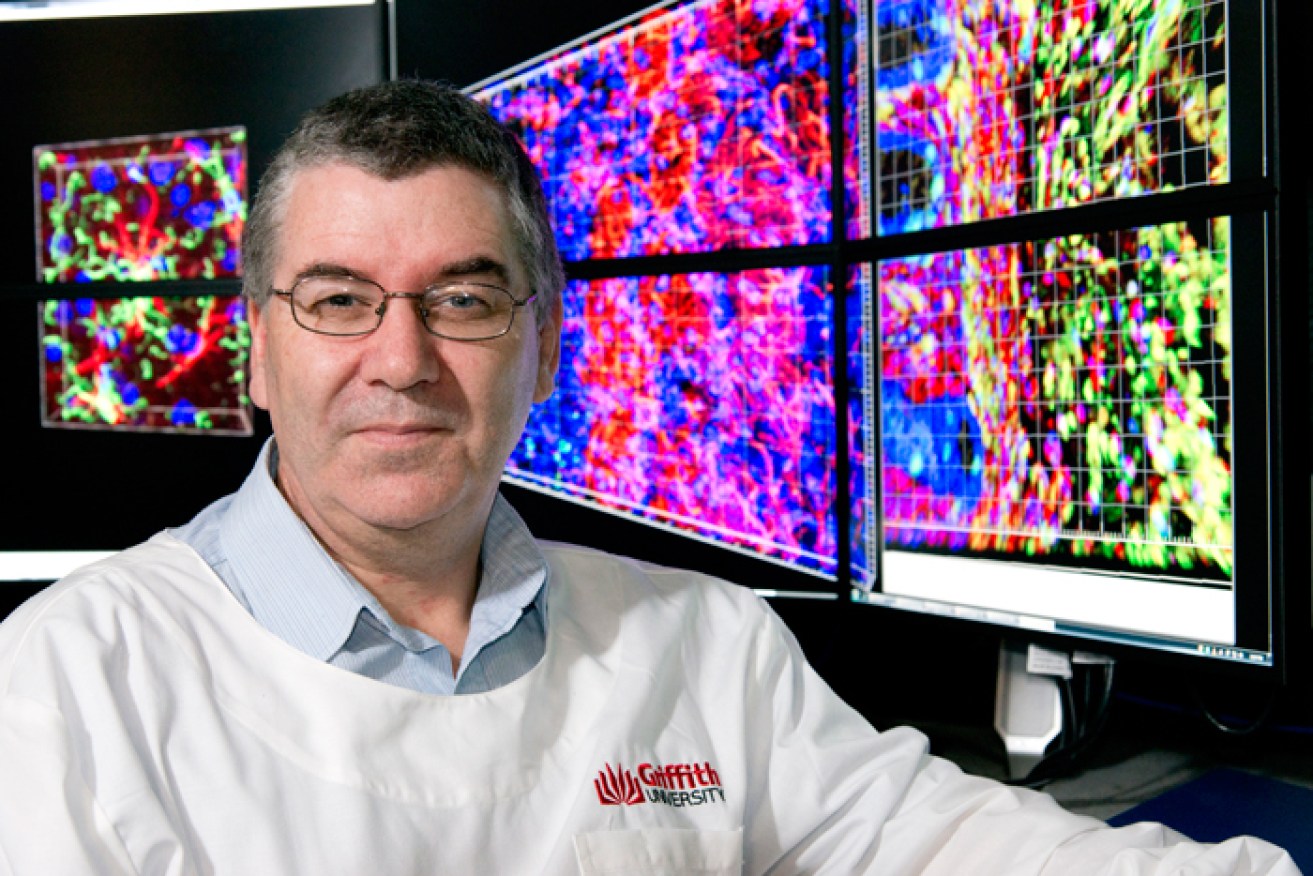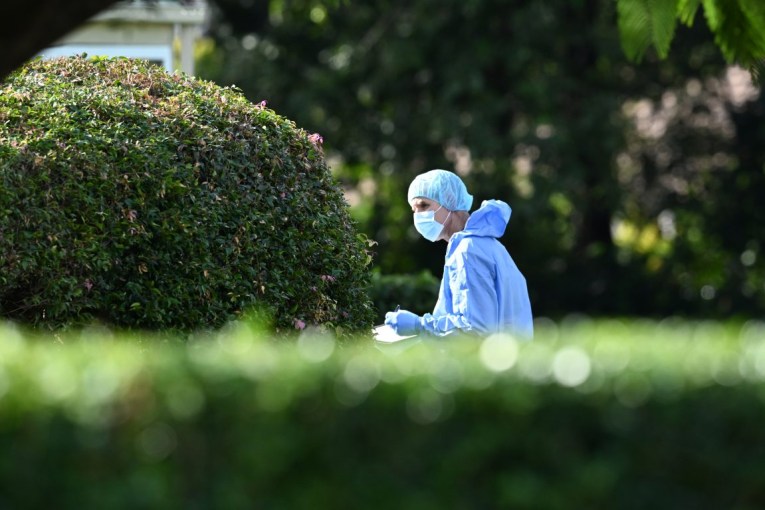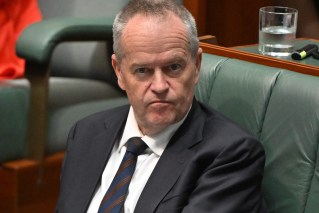Seek and destroy: Griffith Uni reveals virus-busting drug to hit market by 2023
An international team of Queensland and American researchers has developed a next-generation “seek-and-destroy” therapy that stops coronavirus replicating – but has stopped just short of calling it a COVID cure.


Griffith University researcher Dr Nigel McMillan says the new anti-viral treatment could be available by 2023 (Image: Griffith University)
The direct-acting anti-viral that is designed to work on all coronavirus variants could be on the market by 2023.
The team from Menzies Health Institute Queensland (MHIQ) at Griffith University and from City of Hope, a research and treatment centre for cancer, diabetes and other life-threatening diseases in the US, published the new treatment in Molecular Therapy journal.
Co-lead researcher Professor Nigel McMillan from MHIQ said the experimental therapy to treat COVID-19 attacked the virus’ genome directly to stop it replicating.
“Essentially it’s a seek-and-destroy mission. We can specifically destroy the virus as it grows in someone’s lungs,” McMillan said.
He said treatment, which involved stealth particles with gene-silencing technology being delivered to cells in the lungs, was shown to reduce viral load by 99 per cent.
“It is not a cure, it is a therapy,” McMillan said.
“It is almost as good as a cure but it’s really for those people who are suffering in for example ICU where vaccines are too late, so this is a therapy for those people.”
He said the therapy had proved highly effective in mice.
“Treatment with the therapy in SARS-Cov-2 infected mice improved survival and loss of disease. Remarkably, in treated survivors, no virus could be detected in the lungs.”
He said the technology worked using small pieces of an acid that was in all living cells called RNA that could bind to the genome of a virus, stopping it working and cutting it up, ultimately destroying it.
He said it was delivered by nanoparticles injected into the bloodstream.
“The nanoparticles go to the lungs and they fuse into the cells delivering the RNA. The RNA seeks out the virus and it destroys its genome so the virus can no longer replicate.
“This is incredibly specific to just the virus so normal cells don’t suffer from any side effects at all from this particular treatment.”
McMillan said the therapy was cost-effective and able to be produced and stored to meet demand.
“We have also shown that these nanoparticles are stable at 4° Celsius for 12 months and at room temperature for greater than one month, meaning this agent could be used in low-resource settings to treat infected patients,” he said.
Fellow research lead Professor Kevin Morris said the treatment was also expected to be effective against future variants.
“This treatment is designed to work on all betacoronaviruses such as the original SARS virus (SARS-CoV-1) as well as SARS-CoV-2 and any new variants that may arise in the future because it targets ultra-conserved regions in the virus’ genome,” Morris said.
“These nanoparticles are scalable and relatively cost-effective to produce in bulk,” he said.












